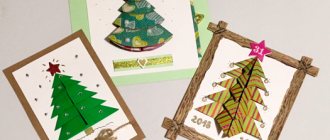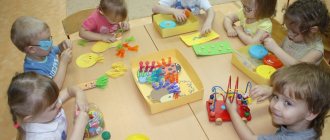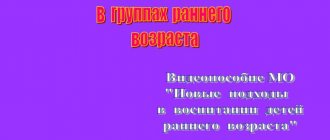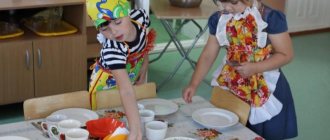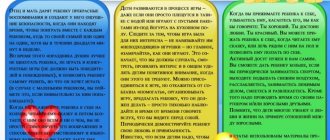Subject development environment in preschool educational institutions. Traffic rules corner in the senior group
Kolosanova Natalya Dmitrievna
Subject development environment in preschool educational institutions. Traffic rules corner in the senior group
The issue of child safety on city streets is very relevant.
Children's ignorance of the rules of behavior on the road often leads to trouble. Therefore, familiarizing pupils with the rules of the road is one of the main tasks of preschool teachers. Part of this important work is the mandatory creation of a traffic rules zone in all groups .
When creating any developmental zone in a group , including a traffic rules center, the teacher must be guided by the requirements of the Federal State Educational Standard.
According to the provisions of the Federal State Educational Standard for preschool education, teachers are required to improve the quality of educational work with children through the organization of a subject -spatial developmental environment in the group . The subject-spatial environment carries enormous opportunities for pedagogical influence on the child - it educates and develops him.
for corners in accordance with their theme, but general provisions are highlighted for all children's activity centers in kindergarten:
meeting the interests of children;
filling the material base taking into account the age characteristics of pupils;
aesthetics, attractiveness and comfort - to create a good mood;
convenience and accessibility of corner for every child - material in the traffic rules center should be freely accessible to children;
multifunctionality of the play corner ; the gaming environment should be easily modified depending on the learning situation;
optimal location in the group (relative to the light source, other thematic corners );
corner variability ;
taking into account the regional component when designing a corner .
Contents of the traffic rules center in the senior group .
I present to your attention the design and attributes corner in our group .
The corner has everything necessary for children to learn the rules of the road.
A model of our area with a roadway and an intersection, which has removable parts: children can model the street on their own.
A set of road signs and a traffic light. There are colorfully designed road signs: if they are constantly in the center of children's attention, preschoolers will quickly remember them.
On the wall hang bright colorful posters on traffic rules and safe behavior on the road.
Fiction, riddles, crosswords on the topic of road rules.
A card index of didactic games, didactic and board games on traffic rules has been created.
Cards depicting dangerous situations that may occur on the roadway.
We often place children's creative work on traffic rules in the corner Children look at them and discuss them.
There is everything you need for role-playing games.
The corner presents all types of road transport: buses, trolleybuses, cars and trucks.
Attributes for the role-playing game “Exam in a driving school”
: window for issuing licenses, driver's licenses, clothes of a traffic police inspector.
One of my favorite games is Gas Station. This year we built a gas station and a car wash.
In the corner for parents there is also information material and recommendations on current topics related to traffic rules.
Parents take an active part in replenishing attributes for role-playing games. The road layout was created with their active participation.
Having a traffic rules corner in a group will help preschoolers acquire the necessary skills for safe behavior on the streets and roads.
Do-it-yourself game layout according to traffic rules for kindergarten
Master class on making a game model “City Street”
Author: Oksana Sergeevna Norkina Teacher, MADOU kindergarten No. 21 “Rosinka” of the combined type of the urban district of the city of Kumertau, Republic of Bashkortostan The master class is designed for educators, but can also be useful for parents. Purpose: teaching game modeling, developing safe behavior on the roadway. Goal: making a model for game modeling in working with children of senior preschool age. Objectives: - introduce children to the rules of the road, the purpose and signals of traffic lights, road signs, expand knowledge about the rules of safe behavior for children on the street; — to encourage children to engage in independent activities in the traffic rules corner. The game layout can be used to develop fine motor skills, visual perception, social and everyday orientation, and spatial orientation.
Description: Stage I - the basis for the layout To make the basis for the game layout “City Street” we will need: 2 pieces from an MDF panel (I have them 53 cm each), a piano hinge, screws and nuts for fastening.
Using a drill, we drill holes in the MDF panels in selected places, and secure the piano hinge with screws and nuts.
So that our model stands at an angle of 90 degrees and does not fall back, we screw a corner stop on one side (for me it is part of the fastening from an old curtain), and paint the lower part of our model with black paint.
Now we will design the upper vertical part of the layout. To design it, we take 2 pictures depicting houses (I put together these for myself).
We print the pictures in duplicate and laminate them; if you don’t have a laminator, you can simply cover them with tape. The picture becomes brighter and it is easier to care for the layout - for example, wipe off dust. We paste one copy of our laminated pictures, joining them onto the layout, this is what we should get.
Now we will add volume to the card. To do this, we cut out buildings from second copies at our discretion, and glue them onto pre-prepared ceiling tile blanks - single background and double foreground, in my work I used “Master” ceiling tile adhesive
Cutting out buildings with a utility knife
We paste it (I still use the same “Master”) on the layout, our street now has “depth”.
Let's move on to the design of the roadway. We take construction tape, highlight the pedestrian crossing, the dividing strip, that is, what we will paint over with white, and cover everything else.
In my work I use ordinary aerosol paints in a spray can, sold at any hardware store, dry quickly, and are easy to use. We highlighted all the lines with white - remove the tape. The roadway and crossing are ready.
Stage II - Paper machines. Now he prints out paper machine templates; there are a huge number of them on the Internet; let’s take these as an example.
The image has been reduced. Click to see original.
The image has been reduced. Click to see original.
We laminate the printed templates (1 sheet of laminated film - 2 sheets of templates with cars), fold the sheets with the white sides inward. We laminate them so that the cars become tougher, brighter and can be wiped clean. When the sheet is laminated, we cut it along the contour and we get 2 sheets laminated on the colored side, the second side remains unlaminated (paper) - the paper sticks together better, and laminated machines shine. This is what a laminated sheet with templates, cut on 3 sides, looks like.
We cut out the car templates and glue them together.
Stage III - road signs. Now let's move on to making road signs. Materials: I used 2 sheets of regular white office paper, ceiling tiles (better washable), a stationery knife, toothpicks, master glue, mosaic in 3 colors (red, yellow, green), laminated sheet with blank signs, I used this one.
The image has been reduced. Click to see original.
We cut out and paste 1 copy onto the tile, cut it along the contour with a stationery knife, and on the other side we glue 2 copies (if you wish, you can not paste the second part of the sign. We make a stand for our signs. Take a sheet of white paper and cut strips of 4-5 mm along the long side sheet. For one sign, you need 5 strips.. Take one strip and twist it onto a toothpick, forming a tight “roll” - this is the upper part of the stand. Glue 4 strips into a long strip, twist it into a “roll”. On a large roll, put a small one on top, glue it together. Dip the edge of a toothpick in glue, pierce our “rolls”, pierce the blank with a road sign with the other edge of the toothpick. Our sign is ready.
To make the traffic light more voluminous, add a small mosaic of the appropriate colors to the lights, pierce the holes with an awl, and insert the mosaic.
Our fleet
Our signs
Thanks everyone for your attention!
We recommend watching:
Summary of the travel game “Lessons of Caution” for older preschoolers Didactic game on traffic rules for kindergarten “My Native Village” Educational and entertaining game on traffic rules for older preschoolers Competitive game program on traffic rules in the senior group “My Bicycle Friend”
Similar articles:
Scenario for children's traffic rules competition in the preparatory group
Long-term plan for the development and management of role-playing games
Scenario for a parent meeting on traffic rules in a preschool educational institution
Project on traffic rules in the senior group
Summary of a lesson on life safety in the preparatory group
Good ideas for creating better traffic centers and corners.
Contained in sections:
- Safety, life safety. Safety Corners and Centers 290
- Traffic rules Traffic rules for children 25954
By groups:
- Senior group
- Preparatory group
- Middle group
Showing publications 1-10 of 786. All sections | Traffic rules Corners and centers
New
Photo
The best
Traffic rules corner in the preparatory group
Every year the traffic rules corner in our group is replenished. The purpose of the traffic rules corner is * Systematization of knowledge on the topic. * Resolving problematic situations that could potentially occur on the road (they are also called road “traps”
.
In the corner there is a variety of material - card indexes...
Didactic manual-game on traffic rules "Road ABC" for preschoolers A textbook on studying traffic rules for preschool children. Author: Shmalts L.M. Abstract: the educational and developmental manual is made in the form of a game machine and is intended for learning traffic rules by preschool children. The use of this...
Traffic training should be in the form of a game
Children's interest in learning traffic rules is the key to their safety on the roadway in the future. Therefore, to maintain attention and good memorization of information, a game approach is necessary, especially in the preschool period. A traffic rules corner in kindergarten will help create an entertaining and at the same time educational environment. Its function should be to explain in a playful way the rules of behavior on the roadway, pedestrian area and railway tracks.
How to design a traffic rules corner in a kindergarten in terms of play? There are two main ways to play out situations on the road:
- Costume performance with the participation of the children themselves. To do this, it is enough to have some attributes of a traffic police inspector (a baton, a cap and a whistle), a steering wheel can be used to designate a car, a zebra can be created from white strips of paper, and let one of the guys handle the regulation of the traffic light layout.
- Board games using roads, signs, figures and/or construction sets. Some elements can be made with your own hands, but it is better to purchase a simple, large-sized model of a street with a pedestrian road, a passage and a roadway. Playing with a toy railroad with signs, bridges, crossings, or even a train station, station, or platform will allow children to develop correct behavior on railway tracks.
You can also sew or purchase vests for children with images of various types of transport. An entertaining game is the question-answer option. This test of children’s knowledge is sold ready-made or carried out in an informal oral survey, for example, on the topic “What is this sign?”
MAGAZINE Preschooler.RF
Contents of road safety corners in groupsThe development of various methodological materials for preschool educational institutions, including those on promoting road safety, is one of the forms of work to prevent children's road traffic injuries. The legal basis regulating this activity is:
- Federal Law of December 10, 1995 No. 196-FZ “On Road Safety”;
- Order of the Ministry of Education of Russia dated August 22, 1996 No. 448 “On approval of documents for certification and state accreditation of preschool educational institutions” (together with Temporary (approximate)
requirements for the content and methods of education and training implemented in a preschool educational institution in terms of the formation in children, starting from early preschool age, skills for safe behavior on the street);
Children are the most vulnerable category of road users. It is the responsibility of parents and educators to protect them as much as possible from possible harm. Therefore, training in safe behavior on the street should be carried out at a young age.
The high level of children's road traffic injuries is largely due to shortcomings in the organization of education and training of preschool children to behave safely on the street.
An innovative approach to organizing didactic classes with preschoolers on road topics consists of simultaneously solving the following tasks:
- development in children of the cognitive processes they need for correct and safe orientation on the street;
- teaching preschoolers road vocabulary and involving them in independent creative work, which allows them, in the process of completing tasks, to study and understand the danger and safety of specific actions on the streets and roads;
- developing in children skills and sustainable positive habits of safe behavior on the street.
When moving from one age group to another, a child must have certain knowledge of the basics of safe behavior on the street. It is necessary to begin training already from early preschool age, gradually increasing the knowledge of preschoolers so that by the time they reach school they can already navigate the street and clearly know the rules of the road.
What a teacher should know about traffic rules Every teacher should know the rules of the road well in order to conduct educational work with children and parents and ensure the safety of students.
- Pedestrians are only allowed to walk on sidewalks and keep to the right;
- Where there are no sidewalks, you need to walk along the edge of the roadway, along the left edge of the road, facing traffic, in order to see moving traffic and step aside in time;
- Pedestrians are required to cross the street only at pedestrian crossings, with marked lines or a “pedestrian crossing”
, and not at intersections with unmarked crossings - along the sidewalk line; - Before stepping onto the roadway in two-way traffic, you must ensure complete safety;
- It is prohibited to cross the path of moving vehicles or step out from behind vehicles onto the roadway;
- In crossing areas where traffic is regulated, pedestrians must cross the street only when the traffic light is green or the traffic controller gives permission (when he turns sideways towards us)
; - In places where crossings are not marked and where traffic is not regulated, pedestrians must always give way to approaching traffic. It is prohibited to cross the street near a roundabout or sharp turn;
- Groups of children are allowed to be driven only on the sidewalk, in no more than two rows (children walk holding hands)
. There should be escorts with red flags in front and behind the column; - Children are only allowed to be transported on buses whose doors and windows must be closed. “Children”
identification sign on the windshield .
In the first junior group, children get acquainted with vehicles: trucks and cars, public transport. Determine what parts the machines consist of. Learn to distinguish between red and green colors.
Therefore, the playing corner should have:
Vehicles set
Illustrations depicting vehicles
Red and green circles, model of a pedestrian traffic light.
Attributes for the role-playing game "Transport"
(multi-colored steering wheels, hats of different types of cars, badges, vests with the image of a particular type of transport, etc.)
Attributes for the game in the garage - various cars, a set of tools (wrench, hammer, screwdrivers, pump, hose)
.
Attributes for the game “Driver and Car”
,
"Cars and traffic lights"
.
Building material for building houses, cars
Didactic games “Assemble a car”
(of 4 parts)
,
“Put the car in the garage”
,
“Traffic light”
.
So, in the first younger group, children are taught to distinguish between red and green colors. It can be explained to children that red and green colors correspond to traffic light signals for pedestrians. A red signal prohibits movement, and a green one allows it (it is advisable to show them first traffic lights with circles, and then with people)
.
When conducting the game “Red - Green,”
the teacher explains that if he shows a red circle, you need to stand, and if it’s green, turn your head left and right, and then walk. This establishes the habit of looking around before entering the roadway, even when the traffic light is green.
In the second junior group, children continue to work on recognizing vehicles, become familiar with the rules of behavior in public transport, consolidate the ability to distinguish red, yellow, green colors, and become familiar with the concepts of “sidewalk”
and
"roadway"
.
Therefore, to the items available in the road safety corner of the first junior group, you should add: Road sign of special requirements “bus or trolleybus stop”
Pictures for the game on classifying modes of transport “What passengers travel on”
,
“Find the same picture”
.
Toys (small cars, house models, builder)
for the game
"City Street"
.
The simplest street layout (preferably large)
, where the sidewalk and roadway are marked.
Layout of a transport traffic light (planar)
.
In the middle group, a new conversation will be about the pedestrian crossing and its purpose, right-hand traffic on the sidewalk and roadway. In addition, children 4-5 years old should clearly understand that when the traffic light turns green for pedestrians and allows them to move, for drivers at that time the red traffic light turns on - prohibiting. When the green light for drivers turns on and allows cars to move, the red light flashes for pedestrians.
The road safety corner must have: A special regulations road sign
"Crosswalk"
.
Road sign for the service "Gas station"
.
Didactic games “Find your color”
,
“Assemble a traffic light”
It is necessary to mark a pedestrian crossing on the street model.
How to develop safe behavior skills on the road in preschoolers.
In the middle group, reinforcing the concept of “sidewalk”
and
“roadway”
, children get acquainted with the places where cars and people move, practice the skill of walking on the sidewalk, sticking to the right side.
It will be new for them to talk about the pedestrian crossing and its purpose. Children must learn to find it in illustrations in books and on models. Then you should explain to children the importance of correct behavior at the pedestrian crossing itself and when approaching it (stop at some distance from the edge of the roadway, carefully examine the roadway, turning your head to the left and then to the right, when moving to the middle of the road, control the situation on the left, and from the middle of the road - on the right)
.
Working with preschool children on the topic of traffic rules: 4-5 years
Developmental environment:
- Layout: intersection, zebra crossing, traffic island;
- Large and small road signs;
- Pictures for the classification of modes of transport;
- Information for parents “What children should know about traffic rules;
- Flannelograph: cars, road signs.
Fiction:
- N. Nosov “Car”
- Dorokhov “Fence along the sidewalk”
In the older group, children learn a lot of new things about road traffic.
It is at this age that one gets acquainted with such large and complex topics as “Crossroads”
,
"Road signs"
.
Therefore, in the road safety corner the following should appear:
A mock-up of an intersection, with the help of which children will be able to solve complex logical problems on road safety and practice the skills of safely crossing the roadway at an intersection.
It is desirable that this model has removable objects, then the children themselves will be able to model the street.
Also, a set of road signs is required, which necessarily includes the following road signs:
information and signposts – “Pedestrian crossing”
,
“Underground pedestrian crossing”
,
“Bus and (or) trolleybus stop”
;
warning signs - "Children"
;
prohibitory signs - “Pedestrian traffic is prohibited”
,
"Bicycles are prohibited"
;
mandatory signs – “Pedestrian path”
,
"Bike Lane"
;
priority signs – “Main Road”
,
"Give Way"
;
service marks – “Hospital”
,
“Phone”
,
“Food station”
.
It's good to have small signs on stands for working with the layout, and larger signs on stands for creative, role-playing games.
Didactic games: “What do the signs say?”
,
“Guess the sign”
,
“Where is the sign hidden?”
,
“Crossroads”
,
“Our Street”
In addition, children in the older group are introduced to the work of a traffic controller. This means that in the traffic safety corner there should be diagrams of the traffic controller’s gestures, a didactic game “What does the rod say?”
, attributes of a traffic police inspector: baton, cap.
| Next > |
Elements of a corner dedicated to traffic rules
What elements should be used to design this composition? Some of the details included in the traffic rules corner in kindergarten are easy to arrange with your own hands. For example, colorful posters with various situations on the road, of which there should not be many, so as not to overload the children’s attention. Cartoon, fairy-tale characters or animals are quite suitable as heroes of such sketches. After the children have already learned something, you can give them the opportunity to draw such drawings themselves.
List of basic elements that it is advisable to include in the traffic rules corner in kindergarten:
- Along with situational images, on a separate section of the wall, stand or other suitable surface there should be illustrations showing the location of pedestrian and transport roads on the street, in particular at an intersection, a traffic light and zebra crossing markings close-up, types of transport, types of cars from different sides.
- Cards with road signs, dolls in the uniform of traffic police inspectors, toy models of cars, traffic lights, and road surfaces. Particular attention should also be paid to safe routes from kindergarten to home.
- Colored paper and everything needed to work with it will allow teachers and children to create applications of varying complexity, from traffic lights with green and red circles to models of roadways and railways.
Traffic rules for children
The traffic rules corner in kindergarten should have several features depending on the age of the children. In the younger group, children should be taught about the most common signs and types of transport using tangible objects, pictures and role-playing games. You should not immediately offer advanced electronic learning methods, which may make cutting out objects from colored paper, modeling from plasticine, etc. uninteresting for a child. In older preschool age, the number of multimedia teaching methods can be increased.
Children should also be shown information about complex road intersections, types of specialized vehicles (ambulances, police cars), a wider range of signs (children, crossing or riding bicycles is prohibited, as well as underground and pedestrian crossings, designation of an installation point, etc.).
Design of the site in the style of traffic regulations
Natalia Glotova
Design of the site in the style of traffic regulations
The time has come for summer health work. The theme for this year was traffic rules.
Much attention was paid to creating a subject-development environment. The group has a safety corner, according to traffic regulations, which includes didactic, educational, and board games; Attributes for role-playing games “Drivers”
,
“Roadway”
,
“My Street”
, etc. (policeman costume, baton, steering wheels, whistles, Attributes for outdoor games according to traffic rules
(steering wheels, hats, capes, rugs, etc.)
; Street layouts with transport vehicles means, intersection, road signs; Albums of plot pictures reflecting traffic situations; Demonstration material
“Transport”
,
“Road signs”
, posters; Construction set
“Street”
.
The developmental environment is created in accordance with the age characteristics of children, educational areas and program requirements.
To consolidate physical qualities, a cow and a cat Matroskin were made for throwing balls and rings, a labyrinth was made from plastic pipes, a “trainer” for legs and barbells with sand for weights, and a swing for balance were invented from old cubes and a construction set. A golden chain and a scientist cat, a mermaid sitting on the branches, traces of unprecedented animals for walking. Knights for throwing bags and twisting. The main activity is play.
In order to implement the tasks of teaching children safe behavior on the roads, at the site of the senior group we have produced manuals in the following areas:
For social and communicative development, a site has been equipped - a street with portable signs, traffic lights , and pedestrian crossings. Stationary cars, buses and box cars. Children create their own traffic situations. "Armchair"
chairs are equipped with seat belts. In the recreation area there are sofas for special vehicles.
Children and their parents made a model of the road and a game with blocks to reinforce their knowledge of road signs. The veranda has floor mats for playing with cars and traffic signs.
Speech development - albums have been prepared for viewing, plot pictures with situations for pronunciation. The wall of the veranda is decorated with the plot “My City”
.
Once a week we publish the newspaper “Pedestrian”
. Children bring magazines and books on traffic rules to look at and read with the teacher.
Cognitive development - games have been made - labyrinths with traffic, the area is decorated with a garland and flower beds according to the colors of the traffic light . Didactic game “Assemble puzzles”
traffic situations and traffic signs.
Artistic and aesthetic development - coloring pages were selected according to traffic situations and traffic signs. traffic lights and cars were made for playing with sand . Algorithms for constructing streets with traffic.
Physical development – the hit-the-target game “ Traffic Light ”
, schemes of games according to traffic rules.
There is an information stand “Security Corner” on the veranda
for parents, Scheme of a safe route to an educational organization. Educational information for parents on traffic rules will be changed periodically.
